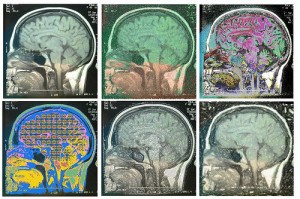Health informatics is a fascinating field, representing the intersection of computer science, information science and health care. Sometimes it is called medical informatics. Health informatics began in the 1950s, as microchips and computers began to emerge. However, the field didn’t really start taking off until the 1970s as computers shrunk in size. And now, with today’s technology, it is little surprise that health informatics is a booming field with a number of applications. If you are interested in learning more about medical informatics, or just brushing up on your skills, here are 25 free open courseware classes on health informatics.
Anatomy and Physiology
 First of all, it helps to have a basic understanding of the human body. Health informatics requires that you have a grasp of what’s going on with the body so that you can interpret what you are seeing. Here are some good, basic classes on anatomy and physiology:
First of all, it helps to have a basic understanding of the human body. Health informatics requires that you have a grasp of what’s going on with the body so that you can interpret what you are seeing. Here are some good, basic classes on anatomy and physiology:
- Human Biology Course from the University of Leeds offers a basic overview of how the human body works at the smallest level, including a section on introductory anatomy.
- Human Growth and Development from Tufts University provides an insightful look at how the body is formed and develops from birth to death.
- Anatomy and Physiology from Western Governor’s University offers images and helpful information on how the body works, system by system.
- Human Physiology from the University of Utah provides a helpful overview of the way the body is built, and how it functions.
- The Human Body from Harvard University is a great resource for all things that have to do with the body, and how it works.
Information Science and Technology
You need to have a grasp of basic information science and technology in order to effectively put together medical images, build databases and integrate health into information technology. Here are some open courseware classes that can help you learn more about information science and technology:
- An introduction to data and information from Open University offers a basic look at how computers work, and how they organize data for our use.
- The database development lifecycle from Open University helps you understand how to put together a database, and how to use it to retrieve the information you are looking for.
- Information Technology from MIT provides you with an overview of information technology, its uses and how to create databases and surveys.
- Global Issues in Information Technology from Weber State University offers an in-depth examination of how information technology is used in our society, and addresses issues, such as privacy, that come up in the health informatics field.
- Medical Artificial Intelligence from MIT is a fascinating course that lets you look at how artificial intelligence works, and how it can be used in a medical setting.
Computing
How you use a computer, and how you set up a computer
to organize information and display it can make a big difference in your level of success in health informatics. Here are some free open courseware classes that can help you bring your computing skills up to snuff.
- Medical Computing from MIT helps you grasp how you can use computing while at the cutting edge of medical science.
- Information Visualization from the University of British Columbia offers you a look at how you can learn how to take information and use a computer to display it in an interesting and useful way.
- Human Computer Interaction from the University of Washington looks at the ways that humans can use computers, and how it affects them on a number of levels. Also includes some programming assignments and information.
- Dataflow Programming from Connexions provides a look at how you can manage data flow, and program accordingly.
- Communication, Technology and Policy from the University of Southern Queensland in Australia offers a look at how computers are changing technology and communication, and the policies that come with that. These concepts are transferable to health informatics on a number of levels.
Statistics
Informatics of any kind rely on statistics. If you are going to do medical informatics, you will need some knowledge of statistics and how they work. Indeed, this will help you present your data, and help you analyze it. These statistics open courseware classes can help you get a basic understanding of statistics.
- Introduction to Probability and Statistics from MIT offers a basic look at how statistics work, and the forces at work behind probability.
- Bioinformatics and Computational Biology Solutions Using R and Bioconductor from Johns Hopkins University looks at biostatistics. This interesting course focuses mostly on use R software as your statistic program, and how it can be integrated into health informatics.
- Statistics Mathematical Principles from the University of Tokyo is an English language class that focuses on the math principles behind statistics.
- Mathematics and Statistics from King Fahd University of Petroleum and Minerals is a collection of courseware that you can use to examine math and stats.
- Experimental Statistics from the University of Puerto Rico can provide you with a basic understanding of how you can use stats as part of different experiments.
Imaging
One of the most interesting aspects of health informatics is the use of imaging. Indeed, technology has provided us with the ability to look inside the human body. Capturing this information, and interpreting it, is an essential part of medical science and informatics. Use these open courseware classes to learn more about imaging.
- Noninvasive Imaging in Biology and Medicine from MIT provides you with helpful information on how imaging can be used in ways to enhance diagnosis.
- Holographic Imaging is another offering from MIT, and revolves around using computers and lasers to create holographic images, and addresses the principles behind how these images work.
- Graphic Design from Miami Dade College is part of iTunes U, and offers a look at graphic design. Understanding these fundamentals of image production and manipulation can help you as you display information.
- Audiovisual Production Learning Club from Open University provides a forum for learning how to capture images, and then how to manipulate and distribute them.
- Functional Magnetic Resonance Imaging: Data Acquisition and Analysis from MIT provides you with a look at how to make use of MRI’s and analyzing the data received.



